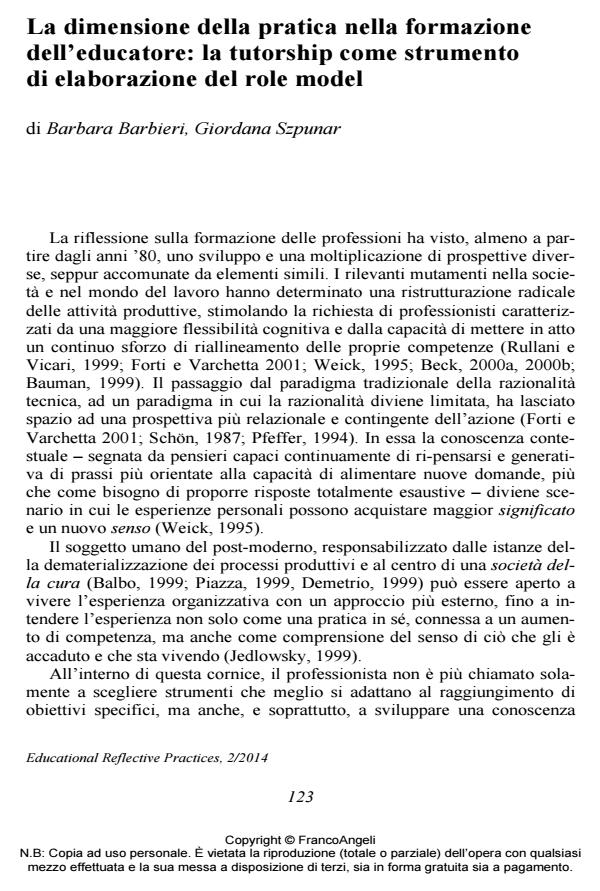La dimensione della pratica nella formazione dell’educatore: la tutorship come strumento di elaborazione del role model
Journal title EDUCATIONAL REFLECTIVE PRACTICES
Author/s Barbara Barbieri, Giordana Szpunar
Publishing Year 2015 Issue 2014/2
Language Italian Pages 14 P. 123-136 File size 146 KB
DOI 10.3280/ERP2014-002008
DOI is like a bar code for intellectual property: to have more infomation
click here
Below, you can see the article first page
If you want to buy this article in PDF format, you can do it, following the instructions to buy download credits

FrancoAngeli is member of Publishers International Linking Association, Inc (PILA), a not-for-profit association which run the CrossRef service enabling links to and from online scholarly content.
In recent decades, the world of work has undergone radical changes that have led to a restructuring of productive activities, stimulating the demand for practitioners characterized by cognitive flexibility and the ability to realignment of its skills. In this scenario, it was necessary to rethink the models of the training courses of educational professions, characterized, more than others profession, from elements of fluidity and insecurity. Studies on the "modelling" in the building process of a professional role, have been developed, mainly in the educational physician field, while little is actually known about the building process of the educators role. This paper focuses on the study of tutorship and role models, as central to the process of development of "professional behaviors" learned during the internship experience, identifying in the tutor’s role the main functions to elaborate the possible models roles internalized or learned. The tutoring role in university training courses, is increasingly becoming a supporting role both in developing the ability to converse with the knowledge related to the action, and in facilitating the acquisition of styles and patterns of professional practices.
Barbara Barbieri, Giordana Szpunar, La dimensione della pratica nella formazione dell’educatore: la tutorship come strumento di elaborazione del role model in "EDUCATIONAL REFLECTIVE PRACTICES" 2/2014, pp 123-136, DOI: 10.3280/ERP2014-002008